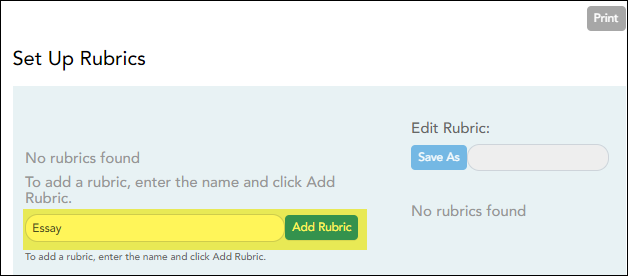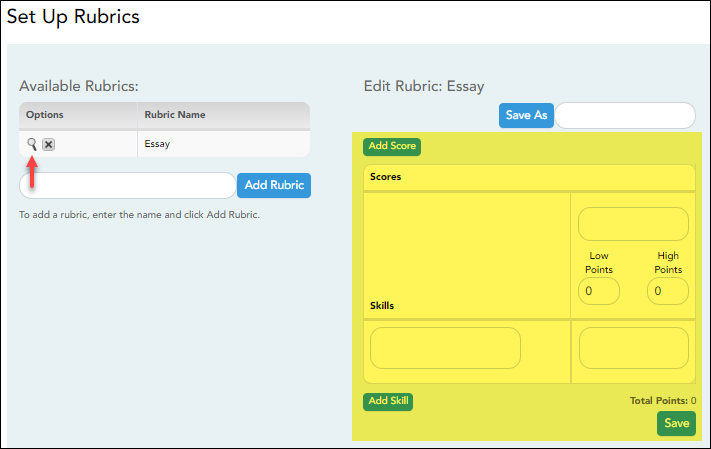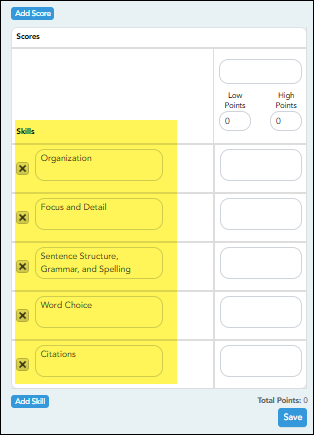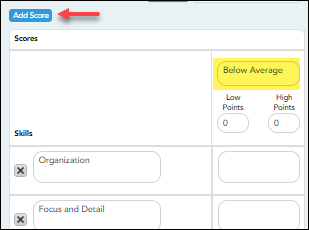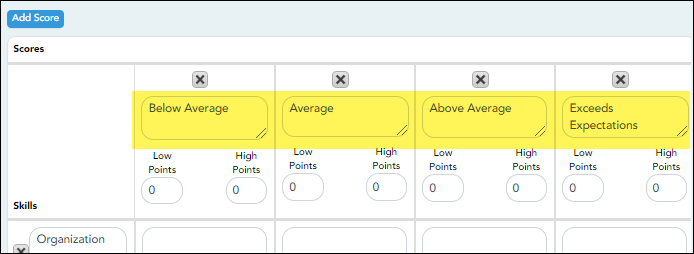User Tools
Sidebar
Add this page to your book
Remove this page from your book
This is an old revision of the document!
Set Up Rubrics
Settings > Set Up Rubrics
This page allows you to create rubric charts that can be used for grading assignments. A rubric chart is a set of criteria (i.e., skills) used for assessing a student's work or performance and includes levels of potential achievement (i.e., scores) for each criterion.
Once a rubric is created, you can associate the rubric chart with an assignment on Settings > Administer Assignments. Then, the rubric will be available for the assignment on Grades > Assignment Grades.
This page is only available if enabled by the campus.
Create a rubric:
Your existing rubric charts (i.e., rubric charts you created) are listed. Otherwise, the message “No Rubrics Exist” is displayed.
| Rubric Setup |
|
|---|
Under Editing Rubric: {Rubric Name}:
A grid is displayed allowing you to enter criteria (i.e., skills) and scores for each criterion.
| Skills |
|
|---|---|
| Scores |
Each rubric chart must have at least one column under Scores.
For each score, use the Low Points and High Points fields to establish a range of possible points within each score. Or, you can assign a single point value for each score.
Example 1 (with score ranges):
Example 2 (without score ranges):
(Optional) For each skill, type a note about the score as it relates to the specific skill, up to 255 characters. The note is used to further clarify the requirements for awarding points for the skill.
Scores must be entered in ascending order from left to right. |
❏ Click Save.
| Total Points |
|
|---|
❏ Click Save.
❏ To save a copy of the displayed rubric chart with another name (e.g., to use the rubric chart as a template for another rubric chart), type the new name in the field next to the Save As button, then click Save As.
The new rubric chart is added to the Available Rubrics list. The new rubric chart can be modified as needed.
Print the rubric chart:
Click Print Selected Rubric to print a report of the displayed rubric chart. The Rubric Report Selection page opens allowing you to make selections for printing the report.
Edit a rubric chart:
❏ Click  for the rubric chart you want to change.
for the rubric chart you want to change.
The rubric chart opens under Editing Rubric: {Rubric Name}, where Rubric Name is the name of the rubric chart. Modify the chart as needed, and then click Save.
If you attempt to edit a rubric chart that is in use, a message is displayed indicating the number of assignments using the rubric chart; however, you are not prevented from modifying some parts of the rubric chart:
- The skills cannot be changed.
- You cannot add a skill; the Add Skill button is not displayed.
- You must keep at least one column under Scores.
- The score note field can be modified.
- You can add scores, but you must maintain the same Total Points.
Delete a rubric chart:
Americans with Disabilities Act (ADA) and Web Accessibility
The Texas Computer Cooperative (TCC) is committed to making its websites accessible to all users. It is TCC policy to ensure that new and updated content complies with Web Content Accessibility Guidelines (WCAG) 2.0 Level AA. We welcome comments and suggestions to improve the accessibility of our websites. If the format of any material on our website interferes with your ability to access the information, use this form to leave a comment about the accessibility of our website.

